Best Elliptical Machine For Home - Buyer's Guide
➤ Best Elliptical Machine For Home ⭐ Elliptical trainers offers you the opportunity to keep fit at home – regardless of the weather, which sometimes has to be an excuse not to be active. Being physically active is not only healthy, it also gives you a certain level of fitness. Better posture and generally better well-being are also the effects of physical activity.
If you want to exercise at home, you have many different options: from rowing machines to exercise bikes to elliptical trainers. In our elliptical trainer comparison, we present you with our 3 Top Choices. The elliptical bike is one of the possible solutions, capable of activating and stimulating different muscle groups. A practical way to get an idea of the most interesting products passes by reading our comparison table.
BEST OF THE BEST
Schwinn 470 Elliptical Machine
PROS
A great number of functions including BlueTooth connectivity, 50 plus global routes on LCD display, and 25 levels of resistance are the main strengths of this machine built to last over time.
CONS
The heart rate sensor can at times be inaccurate.
CONCLUSION
The Schwinn Fitness 470 Elliptical proves to be an ideal object to start this sporting practice. Thanks to a manual adjustment of the effort and a clear display, it allows you to keep various parameters under observation.
RUNNER UP
Niceday Elliptical Machine
PROS
The Elliptical Machine is very easy to install, equipped with big pedals making it easy to exercise for the whole family. No disturbing to others as it comes with a magnetic system that eliminates noise.
CONS
The machine doesn't have a cup holder and the foot pedals are a bit narrow.
CONCLUSION
The Niceday Elliptical Machine is a great choice for an elliptical machine that comes with great features without spending a fortune. It's a great machine for a decent price and it's very easy to assemble, as most of it comes pre-assembled. The most quiet elliptical machine that doesn't need electricity.
BUDGET PICK
Sunny Health Elliptical Trainer Machine
PROS
The structure is essential and does not take up excessive space but, despite this, it does not lack all the essential elements for satisfactory training aimed at improving the health of one's body.
CONS
Based on customers the machine can be a bit noisy
CONCLUSION
An elliptical with a satisfactory relationship between price, performance, and overall quality. Of course, it is a low-cost model, so expectations must be equated with the economic outlay.
What Is An Elliptical Trainer?
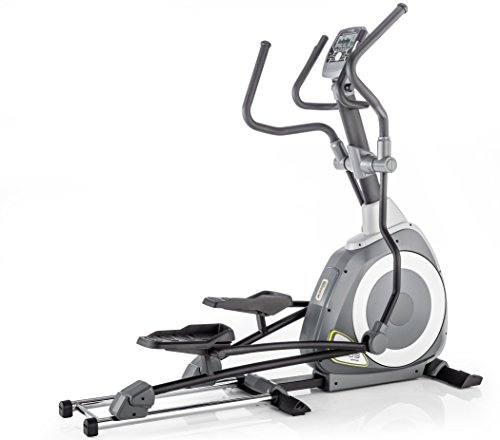
An elliptical trainer is a piece of fitness equipment that you can use to train endurance and fitness at home. Elliptical trainers are part of the equipment in the various fitness studios and can also be used at home. If you look closely at the elliptical trainer, its appearance is reminiscent of a stationary bike. While you can sit down on the stationary bike, the elliptical trainer does not have a seat. So you train while standing.
In addition, most home trainers only train individual muscle groups, while elliptical trainers also use other muscle groups. In addition, you can adapt the movements and movement sequences when training on the elliptical trainer to your needs.
The elliptical trainers are often referred to as cross trainers, which is actually not entirely correct. We will explain the differences between these two pieces of fitness equipment in more detail in one of the following sections. It should be said in advance: Training on the elliptical trainer is easier on the joints than training on the cross-trainer.
On an elliptical trainer, the flywheel with the integrated brake is usually located at the front. As a rule, most of these fitness machines are equipped with a magnetic brake. The pedals are connected to the magnetic brake via an intermediate joint. The movements on the elliptical trainer are stretched and resemble the movements of Nordic walking. In addition, the arms are also involved when training on the elliptical trainer. The handlebars are angled for a good grip during exercise. Your arms are slightly bent or slightly stretched out when gripping.
The History Of The Elliptical Trainer
Effective fitness training not only focuses on the natural movement sequence but also on reducing stress on different parts of the body. In the course of these considerations, the first elliptical fitness trainer came onto the market in 1995. It was developed by the company “AmerSports”. However, this fitness device was a cross-trainer.
Precor also brought out a cross-trainer. The CrossRamp played a major role in this training device. This CrossRamp could be used to adjust the height in angular steps of 13 to 40 degrees. This allowed users to train different muscle groups in a targeted manner and at the same time. With a low incline, there was the possibility of taking long steps, with a large incline, short steps could be combined. In 2004, the successor to this training device came out, so to speak, which was more compact on the one hand and made real running movements possible on the other.
Further development stages of this training device followed. Running movements have been made even more effective by bringing the rear-wheel-drive to the front. And that was the birth of the elliptical trainer. Over the years, braking systems have been further developed and improved, so that today most elliptical trainers are equipped with a magnetic braking system.
How Does The Elliptical Trainer Work?
How the elliptical trainer works can already be deduced from the appearance of the training device: You stand with your feet on the foot pedals and your hands grasp the two handlebars that are located in the front area of the elliptical trainer. You grasp the handlebars with your elbows slightly bent, thus supporting the running movements that you are simultaneously executing with your feet.
When running, the heel remains on the foot pedal in order to be able to carry out a smooth and, above all, healthy movement. It is important that the main work starts with the feet, the arm movements are carried out automatically by your body. In addition, the arm bars give you certain support during your training program. Experienced elliptical trainer runners do not have to hold on to the handlebars at all, but can complete their training without them.
You set the resistance level via the integrated computer. You use this to determine how strongly the magnets act on the flywheel or break it. The two pedals are coupled to the flywheel, so when you run, you drive the flywheel.
The Difference Between An Elliptical Trainer And A Cross Trainer
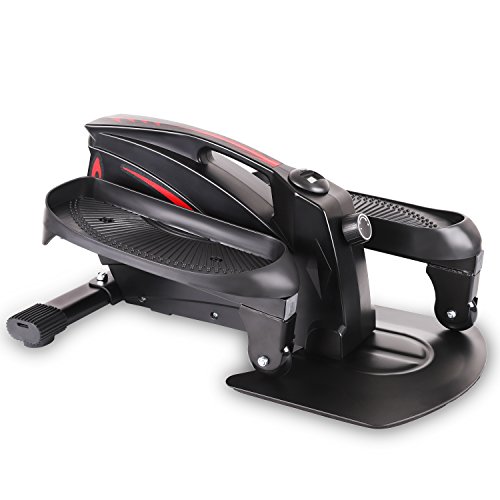
The terms elliptical trainer and cross trainer are often used for one piece of equipment. However, these fitness machines are different training machines. In principle, the elliptical trainer is a subspecies of the cross-trainer. The two training devices do not differ at all in how they work, but in their structure:
- The cross trainer owes its name to the movement of the arms and legs: they move asynchronously. The movement on the cross trainer is similar to the movement when climbing stairs and cycling.
- The elliptical trainer is a further development of the cross-trainer. The advantage of this training device compared to the cross trainer is that you can do joint-gentle sports with the elliptical trainer. This means that people who are struggling with knee problems can also train with the elliptical trainer. The movements on the elliptical trainer are softer, more flowing, and the steps are longer.
On the structural side, the difference lies in the flywheel. While this is usually installed in the rear area of the cross trainer, it is installed in the front part of the elliptical trainer. Due to the design, the movement sequences are slightly different compared to the cross trainer, which is sometimes also due to the different lengths of the linkage and the different translations.
What Types Of Elliptical Trainers Are Out There?
There is not only a difference to cross trainers, but there is also a difference between different elliptical trainers. Although most of the models look similar, there are also differences. Some of the fitness equipment can be folded up, or we have already presented the mini elliptical trainer to you in our product comparison. This means that we classify this fitness training equipment according to:
- Elliptical trainer
- Collapsible elliptical trainers
- Mini Elliptical Trainer
Otherwise, there are other distinguishing features in the individual devices, such as the flywheel, the braking system, or the stride length.
The Braking Systems Of The Elliptical Trainers
In one of the previous sections, we listed the different braking system techniques used on elliptical trainers. In this section, we would like to explain the differences between the braking systems in more detail. We differentiate between the elliptical trainers:
- Magnetic braking systems
- Induction braking systems
The braking system in elliptical home trainers, as the elliptical trainer is also known, is required to be able to break the integrated flywheel and thus generate the desired pedaling resistance. Depending on the braking system, you can adjust the pedaling resistance with different “fine” settings.
The Elliptical Exercise Bike With Magnetic Braking System
This braking system is the most commonly used on elliptical trainers. Due to the lower price of this braking system compared to the induction braking system, corresponding training equipment is often cheaper. The magnetic brake systems are operated with permanent magnets, which slow down the flywheel mass of the training device. The resistance is adjusted in stages. The training devices with a magnetic brake system are very quiet and have only a little wear. As a rule, the training devices with this braking system have fewer resistance levels than the induction braking system elliptical trainers.
The Elliptical Trainer With Induction Braking System
Basically, it can be said that the elliptical trainers with this braking system are more expensive to buy. This fitness equipment has many resistance levels, which allows you to fine-tune the training yourself. These home trainers are driven by an electrical coil that generates a current flow. The flywheel is not touched, which means that the elliptical trainer is very quiet and the material cannot wear out. The resistance levels can be set steplessly.
The elliptical trainer with an induction braking system has one striking difference compared to the training device with a magnetic braking system: it requires electricity.
The Pros And Cons Of The Elliptical Trainers
When exercising on the elliptical trainer, your feet always remain on the exercise machine’s foot pedal. The elliptical guidance allows the hips, knees, and ankles to move naturally, which is more comfortable and gentle on the joints. This makes elliptical trainers the ideal training equipment for people who are overweight or for people who want to do something for their fitness and health in a gentle way. We would like to show you the advantages of the elliptical trainer in the following comparison of the advantages and disadvantages.
Pros
- Joint-gentle movements
- Also suitable for people who are overweight or have knee problems
- Longer stride than the cross trainer
- Improving and increasing fitness
- Low maintenance
- Promotes fat burning
Cons
- Compared to the cross trainer, it is more expensive to buy
- Some require more space than cross trainers
Guide To Buying An Elliptical Machine
Depending on the device, the investment in buying an elliptical trainer is not exactly insignificant. Especially if you want a good training device that offers you several options and is of good workmanship and quality. To help you find the right elliptical trainer for you, we would like to detail the various important points to consider when buying one.
The choice of an instrument such as an elliptical trainer responds in the first place to those who want to have at home a tool with which to train capable of offering the best in terms of performance and muscle groups involved.
In the following lines, our editorial staff has selected some fundamental points to keep in mind before buying. In this way it is possible to compare different models aware of what you are really looking for, avoiding those proposals that are out of budget and that do not serve the type of training you are looking for.
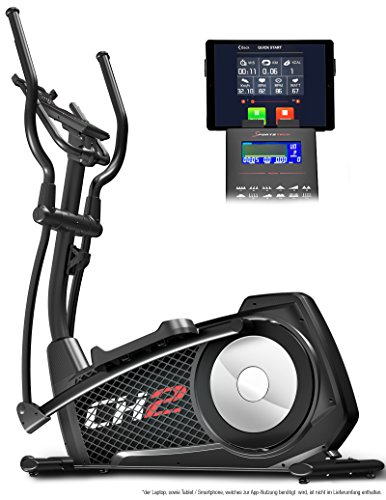
Practicality of Use
A first point to note is that relating to the greater or lesser simplicity with which the object is assembled. Having a detailed user manual at your disposal, with all the necessary information to help you with the assembly, greatly reduces the time needed to set up the machine, especially if it is a professional model. The presence of wheels with which to move the device or a soft but stable base, add points and improve the overall portability of the elliptical.
In the folding models, this possibility throws the object upwards, making it fall within the viewfinder of those who do not have too much space at home to dedicate to a tool with which to train and need a minimum size.
Moving on to the overall structure of the product, the size of the footpegs improves the stability and grip of the user during training, with variable management of heights depending on the build of the sportsman on duty. The handles to lean on must be ergonomic enough, so as to guarantee a firm grip even for those who sweat a lot, but with that softness that does not tire the wrists after a very intense session.
Functionality
The ability of an elliptical is measured by various parameters. First of all, it is important to check if the effort adjustment system is activated manually or if it is electronically adjusted from the inside, so as to best adapt to the type of user who is using the object. A difference in this type also has an impact on the fluidity of pedaling and the silence of the elliptical.
Through a central display, it is usual to access selectable training programs. The screen size and adequate backlighting improve and simplify the reading of information. The more options available, the wider the choice will prove for the user, with a satisfying and fun training session versatility at the same time. For those who love to keep the heart rate under control, the inclusion of Handle Pulse technology is the minimum equipment that cannot be ignored.
These are two sensors placed at the height of the hands, useful for monitoring the pulse in real-time, having all the relevant information on the screen. In the semi-professional models, there is also a heart rate monitor to tie at the waist, at chest height. With this addition, it is possible to have an even more precise and timely reading.
Resistance and Quality
The constructive goodness of such an object has a direct impact on the final result of the training. A flywheel of a certain size and weight ensures on the one hand progressive movement management in which the effort and fluidity of pedaling are maintained throughout the session. A wide platform on which to place the feet, equipped with a non-slip base improves balance and balance, also allowing you to proceed with an elliptical movement back and forth, so as to stimulate different muscle areas.
The presence of comfortable handles and an easy-to-carry structure constitutes a further piece that completes the picture of an elliptical worthy of the name. Usually, these tools do not weigh a little and benefit from a set of wheels that greatly improves movement and movements around the house, adapting the object from time to time to a different environment according to the needs of those who train. The presence of a detailed instruction manual, in which images and text go hand in hand, will greatly reduce assembly times, allowing even those who are not very familiar to combine all the components in full autonomy.
The weight of the flywheel as we have said is an important value and whose impact on the fluidity and management of the pedaling should not be underestimated. Our advice is to spend maybe a little more for components suitable to last over time, rather than compromise by stubbornly pursuing the chimera of the cheapest product.
Accessories
Accessories in the form of connection options with training apps for iOS and Android may also play a role in the purchase decision. If you enjoy watching movies or videos while running, Bluetooth equipment might be the ideal option for you. You can pair your smartphone or tablet with the elliptical trainer via Bluetooth and listen to music or watch films. A tablet or mobile phone holder on the training device itself can also be an advantage. Some of the elliptical trainers available on the market are equipped with a drinking bottle holder, for which you usually get the right drinking bottle.
How To Use An Elliptical Machine
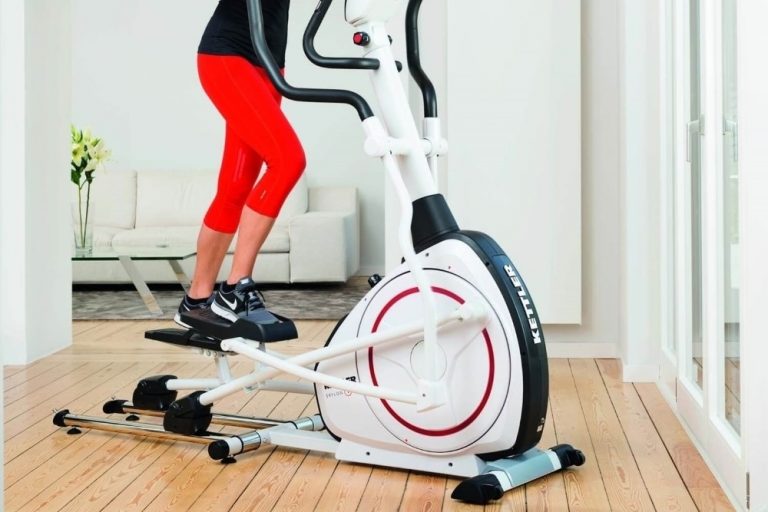
The choice to get an instrument like an elliptical at home responds to the desire of those who, due to force majeure, are unable to practice physical activity in the gym or want to carry out a series of exercises at home to keep fit. In the following lines, we take stock of how to make the most of this object, so as to obtain benefits appropriate to the commitment made, in a progressive enrichment regarding the elliptical and how to use it.
Lose Weight And Firm Up
Many wonder about the extent of a workout and its influence on the user’s well-being and physical state. In this regard, it is good to consider the different situations of each person and the sporting history behind them.
So, to answer the question of how many ellipticals I have to do to lose weight, it is better to mark the point on the ability and desire to give continuity to the practice and effort. Constant and conscious training of one’s own state of health allows a strengthening of the lower and upper body area, capable of bearing fruit over time by also shaping the physiognomy.
Muscles Involved
The luck of having such an object at home is all in the different areas of the body that are stimulated.
The movement that recalls the shape of an ellipse stimulates the thighs, buttocks, and calves while the upper part with arms, shoulders, and back muscles is activated by the management of the fixed or mobile knobs to which the user can hook, so as to increase muscle involvement and the overall work. If you’ve been wondering what the elliptical is good for, now you have no excuse to seek answers elsewhere.
Assembly and Placement
Having a manual with clear instructions on how to assemble is a big help. For this reason, it is advisable to check that everything necessary to connect the pieces properly is included in the package.
Practicality in this sense is the quality capable of really making a difference, speeding up the work, and allowing you to get started immediately. Having a text in a readable format and with accompanying images improves the understanding of the different phases, so as to have a constant comparison between the components that are being positioned and the right way to proceed.
On-Screen Functionality
In the central area of the elliptical, there is sometimes a display. Its usefulness lies entirely in the management and display of information. Through a series of keys the user is able to call up information on distance traveled, speed, time taken, and heart rate.
This last parameter acquires particular importance, especially for those who want to keep the pulse under control, manage the training in complete safety, and vary the intensity and resistance of the pedals during the session. In the high-end models, it is also possible to modify the training program, personalizing the session even more effectively.
Adjustment
Another aspect on which it is good to direct attention is that which concerns the possibility of raising or reducing the effort bar while pedaling. In some models, this option proceeds thanks to a manual adjustment by the user.
Through a knob, it is possible to create greater resistance, so that the legs and thighs make more effort during the workout. In other ellipticals, this modification is managed electronically and an internal system takes care of maintaining this value following the user instructions set through the display.
Calorie Consumption
Among the other options that can be viewed is also included the possibility of having a precise look at the calories consumed based on the effort expressed during the practice. For a comparison of the number and the right quantity, it is good to refer to the tables and consult a nutritionist or a sports doctor capable of giving you the best advice.
The importance and effectiveness of a workout cannot be separated from an effort commensurate with age and physical state. In this way, damage and sudden stops are avoided, while continuing the different sessions peacefully.
Variations In Training
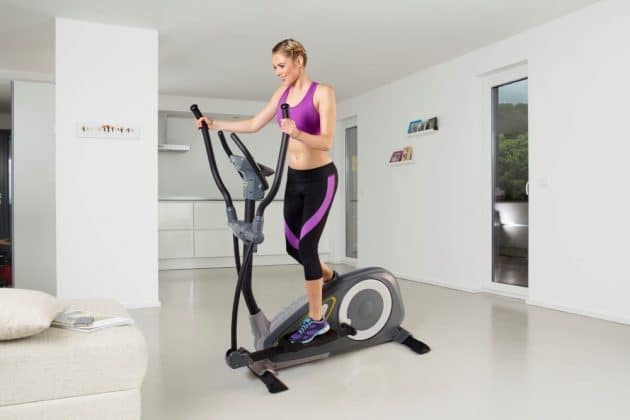
Once the object has been placed in the house, it is possible to start immediately to exploit it properly. In some models, there are in addition to the platforms on which to rest the feet also the classic pedals of the exercise bike.
In the presence of a hybrid model of this kind, the type of training can be alternated, so as to exploit on the one hand the muscular work guaranteed by the elliptical and then get up and benefit from the exercises as on a step, training arms and legs at the same time.
Go One Step At A Time
It is good to remember that a good workout begins with a progressive difficulty curve, specifically designed to allow the user to approach the instrument he is using appropriately.
We, therefore, advise you not to overdo it, thinking in the first instance of the centrality of continuity and not of excessive effort that risks damaging a muscle, so as to force the user to an abrupt stop to recover. Twenty minutes of the elliptical a day is already an interesting start to start burning calories, without overdoing it and giving the right space to rest.
FAQ
For those who are only now approaching this tool, we can answer that it is an evolution of the classic exercise bike, with the difference in the movement performed by the feet and the muscle groups involved.
Training with the elliptical is suitable for every day, maintaining adequate progression without overdoing it, so as to obtain results over time that comply with the constancy of commitment.
Given that it is always advisable to start a sporting activity after consulting a specialist, the use of the elliptical does not present particular limitations for those who have good joint mobility of the lower limbs.
Overweight people must carefully check the maximum resistance of the machine before training and proceed slowly at the beginning, so as to become familiar and acquire the right coordination.
Depends. Although they have on average dimensions larger than an exercise bike, there are still resealable models on the market. Therefore, those who need to save space at home should check the overall measurements on the product sheet.
Also given the shape and type of movement it is advisable to dedicate the right space to the object, so as to be able to train without difficulty and in complete safety.
Usually, in the central part, there is an LCD display. On this screen, the user can keep track of information such as heart rate, distance traveled, and training times.
Among the options, there is also a training program but this possibility is not always contemplated. For these reasons, if you want to vary the sessions, first check the functionalities put in place by the product you are interested in. This way you will avoid unpleasant surprises.
The greater or lesser noise of the object depends on the construction quality and the type of flywheel inside the machine body. The heavier the weight, the better the fluidity, with a low noise floor in models where the latter reaches a certain size.
The particular shape and structure of the pedals substantially differentiate the elliptical from the classic exercise bike. In fact, the movement that the legs make is not of a circular type but follows an elliptical line.
By adjusting the height and also taking advantage of the handles present, the user involves not only the thighs, buttocks, and calves, but also the upper part of the body, such as the arms, shoulders, and back. Then, by modifying the effort, it is possible to intensify or reduce the load and resistance with respect to the movement imparted by the athlete.
Answering this question precisely requires prior knowledge of the user’s physical form.
By leveraging common sense, however, we can confirm that the continuity of training is the lever on which to build success towards the goal. Without forgetting the importance of a healthy diet and a lifestyle suitable for the age and physical fitness.
To start seeing results, our advice is to proceed with a basic thirty-minute workout, trying to understand how your body behaves once the training session is over. While the desire to challenge yourself can take over, it’s never healthy to overdo it and unnecessarily stress your joints and muscles.
For those who have had the opportunity to experience the benefits of this tool for some time, you can switch to an adjustment of the resistance of the effort capable of putting strength and endurance to the test.
You can also favor short-duration high-intensity sessions, responsibly monitoring the heartbeat and effort, in order to burn a good number of fats. We would like to reiterate that the results of serious work are not immediate but reward consistency and a serious approach to training as a whole.
Once you have chosen the model that is right for you, it is advisable to adjust the height of the pedals and handlebars according to your height. In this way it is possible to better manage the movement of arms and legs, also taking advantage of the central display.
You can start with a quiet ride, in order to warm up your body progressively and move on to one of the available programs at a later stage.
This term identifies a system designed to monitor the heartbeat.
Usually, two sensors are placed on the handlebars, so that the user, once grasped, can proceed with the training, keeping the heartbeat under observation. For a higher level of precision, it is also possible to have a heart rate monitor, not always included in the package, except in the cases of a professional-grade elliptical.
Disclosure: There are affiliate links in this comparison. If you click on one of the product links and buy a product, we will receive a commission for this. However, there are no additional costs for you. Thanks a lot for this! Learn More



